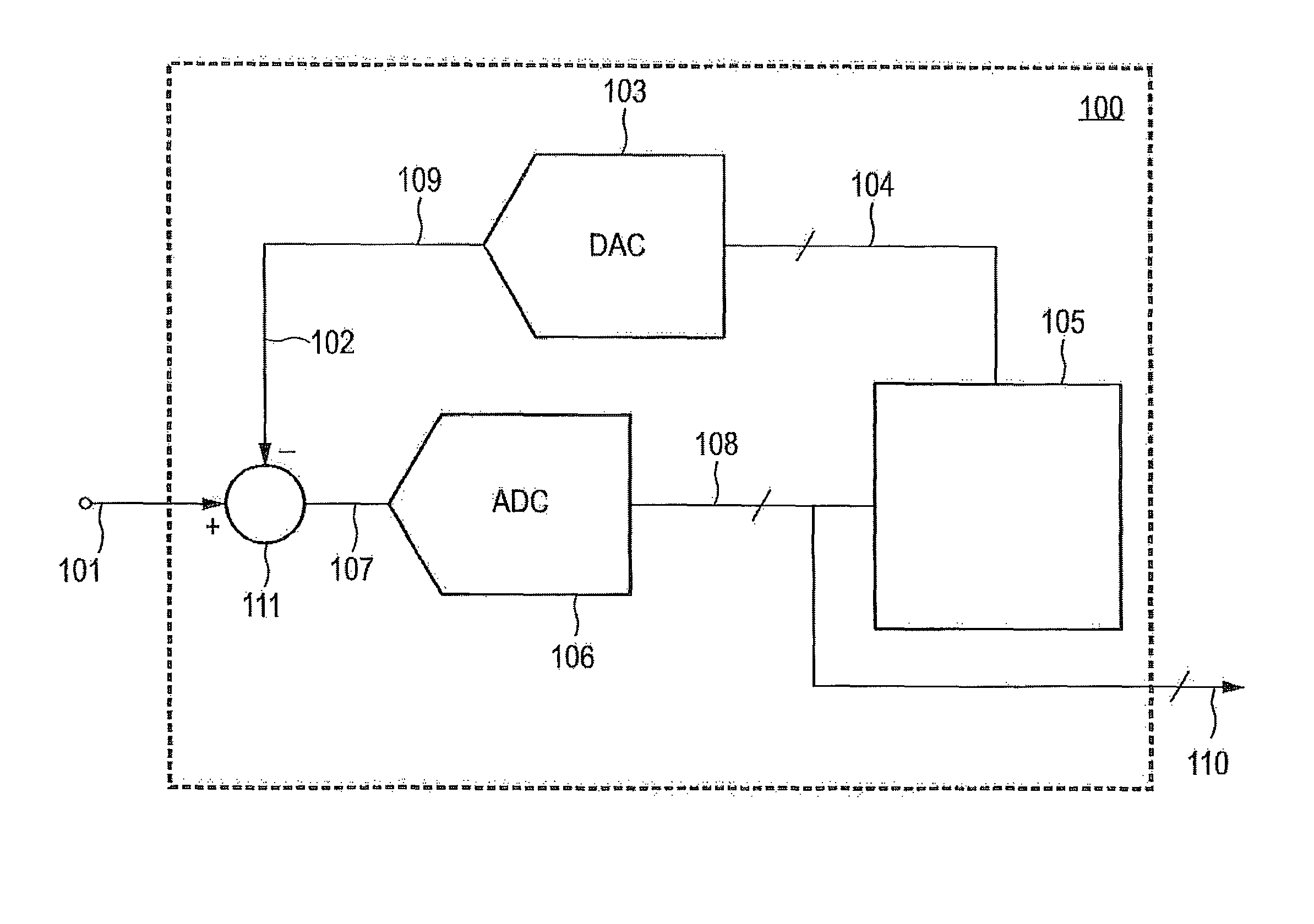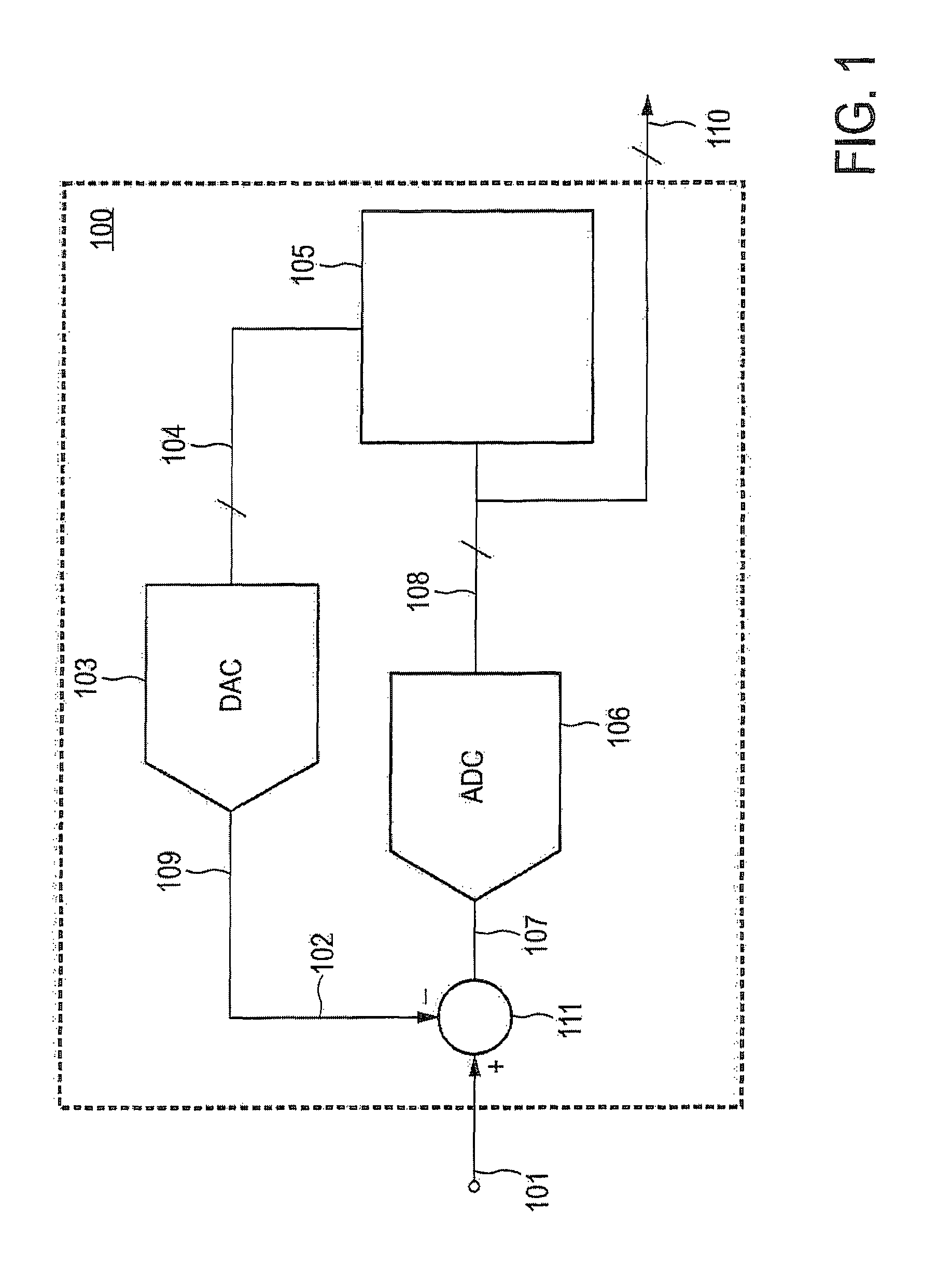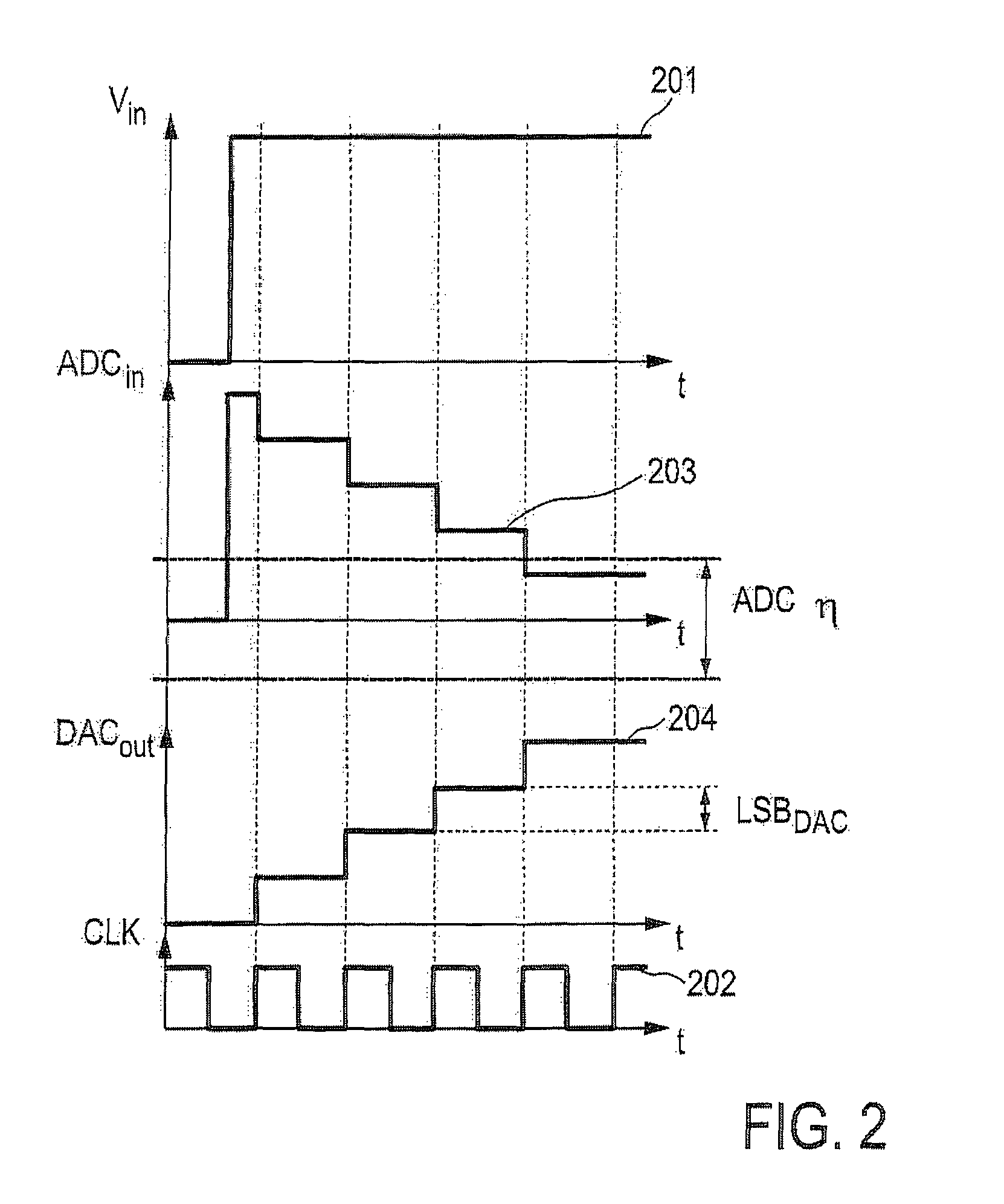Automatic common-mode rejection calibration
a common-mode rejection and calibration technology, applied in the circuit field, can solve the problems of dc elimination, high common-mode rejection, and the possibility of amplifying differential signals, and achieve the effect of improving the balancing of the operation point and enhancing the cmrr
- Summary
- Abstract
- Description
- Claims
- Application Information
AI Technical Summary
Benefits of technology
Problems solved by technology
Method used
Image
Examples
first embodiment
[0042]In a first embodiment, the calibration signal is stored as calibration sequence q whose actual values define in which of the at least two unbalanced states the system is put in any particular instant. In a basic implementation, the calibration sequence q is a binary sequence comprised of two kinds of symbols each being associated with one of two different unbalanced states. It is noted that the calibration signal that determines the unbalanced state of the system can be designed to have a rate or frequency, respectively, much higher than the characteristic frequency of the system. If the introduced unbalances and the calibration sequence q are chosen in an appropriate way, the time average of the differential output results in a compensation of the introduced unbalances by means of the averaging. Methods to choose and to generate the right unbalance and the calibration sequence q are described in the following.
[0043]Preferably, the compensation is performed in the first block ...
third embodiment
[0088]FIG. 8 illustrates simulation results of different methods for generating the calibration sequence q according to the present invention. The simulations have been repeated in three cases: with an ideal transconductor (see solid line in FIG. 8), i.e. gmd independent from q (gmd=gmd0)); with a transconductor with gmd variations of ±1% dependent on the value of q (gmd=gmd0(1+k q)) when using the system for ILA depicted in FIG. 7 (see dotted line in FIG. 8); with a transconductor with gmd variations of ±1% dependent on the sequence q and using a calibration sequence qs obtained from a single digital modulator, i.e. no ILA (see dashed line in FIG. 8). The common-mode tone is buried under noise level: in this case the average q used was ideal and the use of a pseudo-random sequence results in a very high CMRR. The folding of quantization noise can be clearly seen for the case when ILA is not adopted (see dashed line in FIG. 8). With ILA (see dotted line in FIG. 8) no folding is pres...
PUM
 Login to View More
Login to View More Abstract
Description
Claims
Application Information
 Login to View More
Login to View More - R&D
- Intellectual Property
- Life Sciences
- Materials
- Tech Scout
- Unparalleled Data Quality
- Higher Quality Content
- 60% Fewer Hallucinations
Browse by: Latest US Patents, China's latest patents, Technical Efficacy Thesaurus, Application Domain, Technology Topic, Popular Technical Reports.
© 2025 PatSnap. All rights reserved.Legal|Privacy policy|Modern Slavery Act Transparency Statement|Sitemap|About US| Contact US: help@patsnap.com



